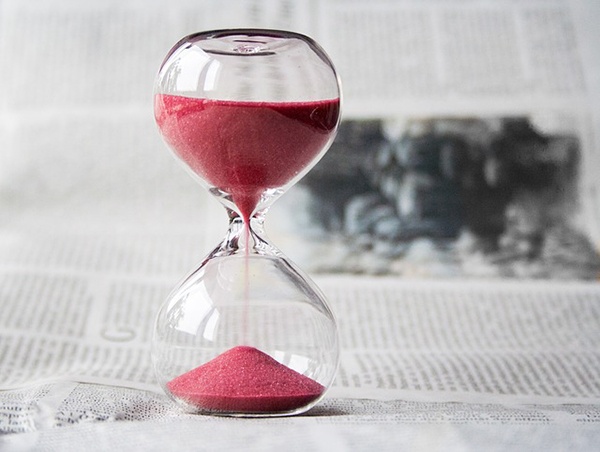
If you only have a short time left to study for the ACT, using official practice tests can help you raise your scores quickly. In this article, I'll take you through a 20-hour ACT prep plan that uses official practice tests to hone your skills on the test. This approach will show you exactly what you can expect on test day and help you to identify and address the most pressing weaknesses in your test-taking strategy. Below, I've broken down the most effective way to get the swiftly get the greatest benefit from practicing with official ACTs, as well as explained the benefits and drawbacks of this type of prep program.
Why Are ACT Practice Tests Good for Short Term Prep?
Practice tests are the best study tools for students who are less familiar with standardized tests and have limited time to prepare. You will experience the largest point gains in the shortest time through the use of practice tests. Familiarity with the overall test format and time constraints will help students who are new to the ACT improve their scores more dramatically than practicing individual questions in isolation.
Understanding and fixing your mistakes on practice tests is the number one way to improve your scores. If you can be honest with yourself about what you’re missing and take steps to counteract your most costly errors, you’ll be well on your way to a great ACT score.
How to Prep for the ACT in 20 Hours Using Practice Tests
The following is a basic outline of how you can use 20 hours and three official practice tests to prepare yourself for the ACT. You can always spend more or less time reviewing your practice test results depending on how much time you have before the real test!
Step 1: Take an Initial Practice Test (4 Hours)
You should take an official ACT practice test right off the bat so you can figure out your score level and main weaknesses. Make sure that you use the same time constraints as the real test, and set yourself up in a distraction-free environment with the appropriate supplies. Don’t take the test on a computer; it won’t be the same experience as a paper-based test. You should always print out practice tests! See this article for more information on how to simulate realistic testing conditions.
 Be prepared with plenty of sharpened pencils that have nice robust erasers. Look at them. Beautiful.
Be prepared with plenty of sharpened pencils that have nice robust erasers. Look at them. Beautiful.
Step 2: Review Your Mistakes (4 Hours)
Now for the hard part - understanding your mistakes on the practice test and fixing them! You don’t have that much time, so you won’t be able to go super in-depth with what you’re missing, but there are lots of quick fixes you can implement that will result in significant point gains. Notice which sections gave you the most trouble.
Your mistakes might fall into a few different categories. Here are some issues that students commonly run into on the ACT and strategies dealing with them:
Time Management Problems
If you couldn’t finish a section of the test, you have problems with time management. These issues are common for students who are new to the ACT, and can usually be resolved through strategy changes. Since the ACT is a fairly predictable test, you can make a plan in advance to tackle your time problems.
As an overall strategy, you should learn to skip questions that you spend more than 30 seconds trying to figure out. Lingering on difficult questions can be very damaging to your scores. If you spend too much time on hard questions early on in a section, you may miss easier questions at the end and sacrifice points.
It’s very common for students to run out of time on the Reading section of the ACT because the passages are so long. If this is the case for you, you might try changing your reading strategy. Skimming or reading the questions first rather than reading the passage closely can save a lot of time. Read this article for more information on passage reading strategies.
Since the ACT always includes passages in the same topic order, you can also try reading the passage in the topic area where you feel most confident first. For example, the natural sciences passage is always last, but you could skip right to it and do those questions first if science is a strength of yours. This way, you won’t run out of time before you get to the types of questions that are easier for you.
If the science section is giving you trouble, you might try reading the conflicting viewpoints passage last. This passage often ruins people’s pace on the science section because it involves more reading and takes up more time than the other data-driven passages. If you save it for last, you won’t be forced to rush on other parts of the Science section that might be easier for you.
You can also read our other articles for more tips on how to avoid running out of time on the ACT.
 This will be an accurate depiction of you taking the ACT once you overcome your time problems.
This will be an accurate depiction of you taking the ACT once you overcome your time problems.
Careless Mistakes
If you find that careless mistakes are an issue for you, there are a couple of steps you can take to get a better handle on them. A careless mistake is a mistake that happened because you didn’t read carefully enough or were rushing through the question. You should have known the answer, but you answered incorrectly anyways.
To reduce instances of careless mistakes, you should always double-check your answers at the end of each section. You should also try to read more carefully and avoid rushing. On the Math section, you can underline what the problem wants you to solve for so that you don’t get lost in your calculations. You can also underline key words in Reading and Science questions to keep yourself on track.
Lack of Content Knowledge
Did you notice that you struggled in a particular content area on the practice test? Since you only have four hours to review your mistakes, you may not be able to fix your content weaknesses completely. That being said, small issues with content can be fixed with minimal study time.
Since the ACT doesn’t give you math formulas, it will be useful for you to memorize any formulas you forgot that may have caused you to lose points. You can also brush up on some grammar rules if you had issues on the English section. If there’s a very large area of knowledge that you’re missing, don’t try to learn all of it now. Focus on more superficial issues that will allow you to gain back the most points in the shortest amount of time.
 Don't break out the heavy duty study materials for your gaps in content knowledge if you only have 20 hours. Zero in on the easy fixes.
Don't break out the heavy duty study materials for your gaps in content knowledge if you only have 20 hours. Zero in on the easy fixes.
Step 3: Repeat Steps 1 and 2 (8 Hours)
After you’ve evaluated your mistakes on the first practice test and developed a new strategy, you should take a second test to see where you stand. Then, you can repeat the process of analyzing and fixing your mistakes. If you find that you’ve improved significantly, that’s great!
You may be making different mistakes now, so reassess your strengths and weaknesses and work on adapting your strategy. If you haven’t improved, you should look at how you reacted to your mistakes on the previous test. Try working with alternate strategies to combat your weaknesses.
Step 4: Take a Final Practice Test (4 Hours)
After the second round of testing and evaluation, you should take one last practice test before the real ACT. Make sure you use all the strategies you came up with in your review sessions. The extra practice will help to ensure that your performance on the real test is consistent with your current practice test results.
Total Time: 20 hours!
 Yes! You did it!
Yes! You did it!
Will 20 Hours Be Enough Study Time for You?
You can certainly improve your ACT scores in twenty hours, but for students who need to make significant changes of more than 2 or 3 points it may not be ideal. For example, if you hope to improve your scores by 6 points, 80 hours might be a more realistic estimate of how much study time you need to reach your goal. See this article on how long you should study for the ACT to get a better idea of how to plan out your time. If you’re not sure of your goals yet, read about how to find your target score.
Even if you plan on studying for a longer period, going through the 20 hour study plan can be a helpful way to assess your problems and get in some good practice. You can spend more time in the mistake evaluation and strategy revision phase if you plan on studying for longer than 20 hours. You might decide to take an extra practice test or two as well so that you can keep revising your strategies to keep pace with your point improvements. To learn more about why studying for the ACT is worthwhile and how it will help you in the future, read some of our free guides and other resources!
What's Next?
Are you worried about your low ACT scores? Learn more about some of the best ACT strategies for low scorers who are hoping to improve!
Procrastination when prepping for standardized tests is a common problem. Find out how you can beat it!
If you're looking for basic tips to improve your ACT scores quickly, read about these 15 mini-strategies that can make a big difference.











